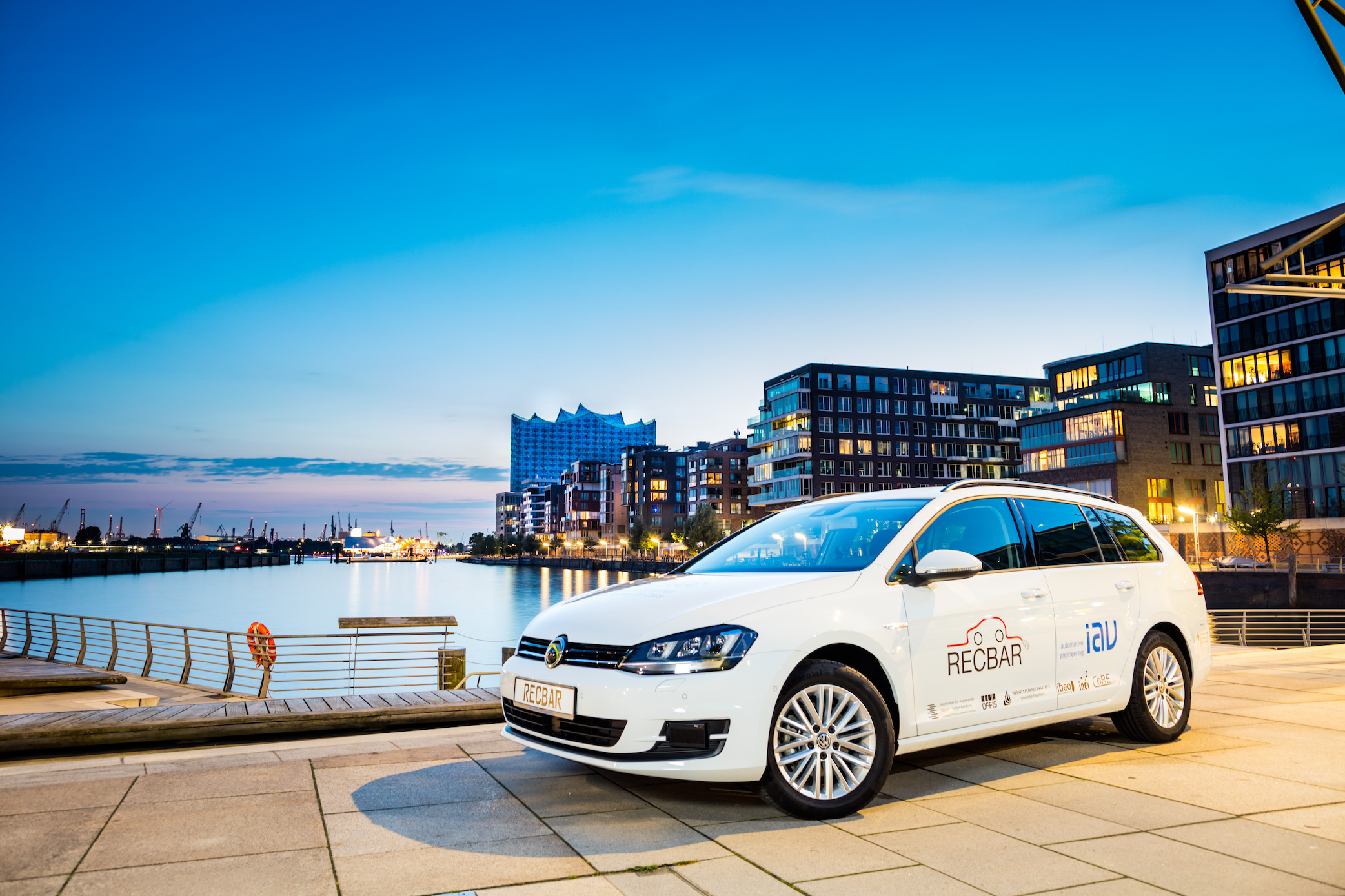
RECBAR Prototype Car
The RECBAR project analyses the potential of the technology Ethernet as the central automotive communication infrastructure. RECBAR is an acronym for “Realtime Ethernet Backbone for Cars”. The project is an association between the Hamburg University of Applied Sciences (HAW), IAV automotive engineering, the research and development institute for computer science tools and systems (OFFIS) Oldenburg and the cooperative computing and communication labratory (C-LAB) in Paderborn. It was started in the third quarter 2012 and is scheduled for the period of 3 years.
The objective of RECBAR is to design, develop and test intelligent backbone architectures for future use as automotive communication infrastructures. Today’s in car network is an aggregation of multiple communication technologies. Ethernet as a proven technology with the ability as homogeneous backbone to reduce complexity will be studied. On this backbone various domains are able to coexist with different demands in timing, availability and security. Furthermore, the research group will reflect economical and commercial aspects for automotive use too, while laying emphasis on the following projects:
These metrics represent the groundwork for evaluation and validation of intelligent Ethernet based in-car communication architectures. Built on this background an assessment of the technical and economical opportunities is possible, which leads to optimised findings. In preliminary studies to RECBAR a first set of potential metrics could be specified and were adapted to Time-triggered Ethernet. The results confirm the feasibility of Real-Time Ethernet as a homogeneous backbone used in the automotive communication infrastructure.
The application of Time Triggered Ethernet have to be restricted to the communication technologies used to set up the automotive backbone architecture. So those technologies have to be mapped without affecting the remaining infrastructure. Therefore, strategies for consolidation are necessary to outline the technical and economical aspects to integrate those backbones. These strategies have to take advantage of iterative approaches with economical and commercial criteria, ensuing in an incremental deployment.
To analyse, optimise and evaluate new design strategies and functionality in networks, event based simulation is used. RECBAR develops a new simulation framework based on OMNeT++ and the INET expansion for Time Triggered Ethernet infrastructures. For consolidation it is critical, to ensure independence for invoked applications by a transparent representation of the backbone bus technology. In the simulation-model real automotive bus designs are used to evaluate and optimize new strategies of consolidation.
The prototype will be a proof of concept to show the realisability and demonstrates the know-how to our partners. With the use of stimuli generators and data sinks selected electronic control units will be integrated to a flat backbone topology. Through praxis related research of this technology advanced experience is gained, analyses of the time triggered Ethernet based communication infrastructure and finally a comprehension to the related simulated results is feasible.